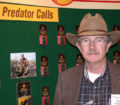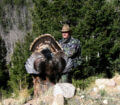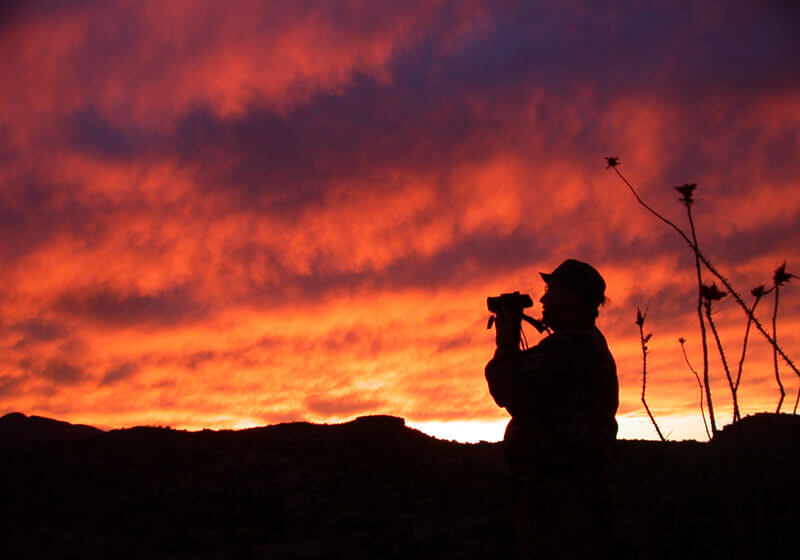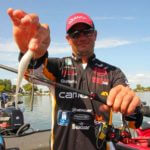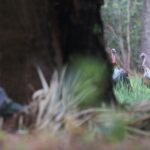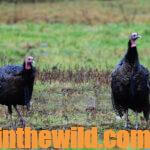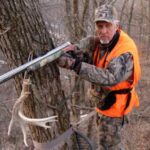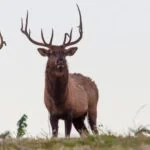John’s Note: What many people don’t know about Wayne Carlton of Montrose, Colorado, is that for most of his life outdoorsmen knew him more for his turkey calling and hunting skills rather than hunting elk. Carlton has helped develop many elk calls and has been very active in the Rocky Mountain Elk Foundation organization and shows. But, before he moved to the West, Wayne Carlton had his own line of turkey calls and was known across the East as a very-good turkey hunter and turkey caller. Carlton frequently does turkey hunting seminars and still loves to call, hunt and teach turkey hunting.
 In the western United States, the wind is called Mariah. In many sections of the West, the wind seems to blow constantly. At some places in some states, if you wait for a calm clear day with no wind, the entire turkey season may pass you by, and you won’t get your gobbler.
In the western United States, the wind is called Mariah. In many sections of the West, the wind seems to blow constantly. At some places in some states, if you wait for a calm clear day with no wind, the entire turkey season may pass you by, and you won’t get your gobbler.
Turkeys don’t like the wind any more than we do. If they start to strut, and the wind catches their tail feathers, they’ll almost tip over. Turkeys also know that they can’t hear and see danger as well in the wind. So, they don’t like to be out in open places where you can see them. On windy days, your calls don’t travel as far as they do on clear days. Many times if you call into the wind, your call will come back to you. Therefore, windy days are bad days to hunt turkeys. However, if you only have windy days to hunt, you’ve got to learn how to think like a turkey.
One time I was on top of a mountain trying to call turkeys. In most parts of the country, generally you can go to a high ridge, call from that ridge and have your call travel from a long ways, cover a lot of ground and hopefully reach numbers of turkeys. However, if you’re a turkey, you won’t be standing on a high ridge trying to strut and call hens because foxes, coyotes and bobcats can see you, sneak up on you and eat you up before you’ll spot them. Besides if you spread your tail feathers, a big gust of wind may just blow you off the top of that ridge. Therefore a ridge isn’t a good place to try and strut and call hens, if you’re a turkey.
Once I decided that the turkeys wouldn’t be on the ridges, I asked myself, “Where would I strut if I were a turkey? I’d want my hens to see me, I’d want to see them, and I’d want to be able to strut and drum without fear of being tipped over by the wind.” I thought that if I was a turkey I’d go down into the river bottom where the wind would blow over me, I could see everything that moved in the bottom, my drumming, strutting and calling would be better, and I could see my hens. So, I went down to the river bottom and didn’t see or hear a turkey. I kept telling myself if I was a turkey, this area is where I’d be.
 I was guiding a lady turkey hunting on this particular day. Just after I’d used my third turkey call I saw a turkey pitch off the side of a ridge and fly down to the bottom. A few minutes later I saw another turkey pitch off the side of the ridge and fly down to the bottom where we were hunting. Both turkeys were mature birds with 11-inch beards, and both gobblers came in to us. The lady I was guiding took one, and I bagged the other.
I was guiding a lady turkey hunting on this particular day. Just after I’d used my third turkey call I saw a turkey pitch off the side of a ridge and fly down to the bottom. A few minutes later I saw another turkey pitch off the side of the ridge and fly down to the bottom where we were hunting. Both turkeys were mature birds with 11-inch beards, and both gobblers came in to us. The lady I was guiding took one, and I bagged the other.
I learned from the Mariah Gobbler that:
* if I’ll put myself in a place where that turkey wants to be, regardless of the weather conditions, many times that’s where the turkey will be. When I’ve been hunting and guiding at Vermejo Park Ranch in New Mexico, I’ve seen turkeys stay under spruce trees where the cover is really thick, when the wind’s blowing hard. I’ve seen turkeys strutting under those spruce trees and refusing to go out into the early aspen woods when the wind is howling.
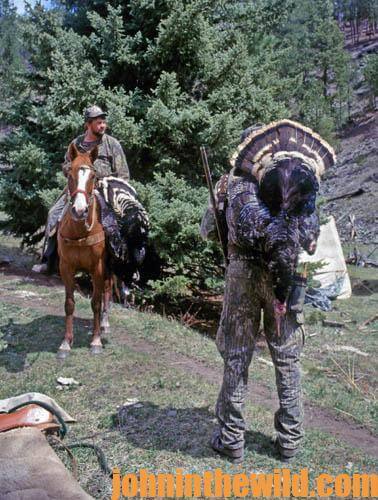 * on those windy days, if you’ll locate places where you’ve got protection from the wind, you probably will find turkeys.
* on those windy days, if you’ll locate places where you’ve got protection from the wind, you probably will find turkeys.
To learn more about turkey hunting, check out John E. Phillips’ print, Audible, Kindle and Nook turkey books at https://johninthewild.com/books/#turkey and at www.barnesandnoble.com. You also can download a free Kindle app that enables you to read the book on your iPad, computer or SmartPhone. You can learn more about calling turkeys by going to johninthewild.com/audio-files/ for audio turkey tapes to purchase of Lovett Williams, Rob Keck and Chris Kirby, available for download to your SmartPhone, tablet or computer. For a free copy of John E. Phillips’ “The Turkey Gobbler Getter Manual,” go to https://johninthewild.com/free-books/ to download.

